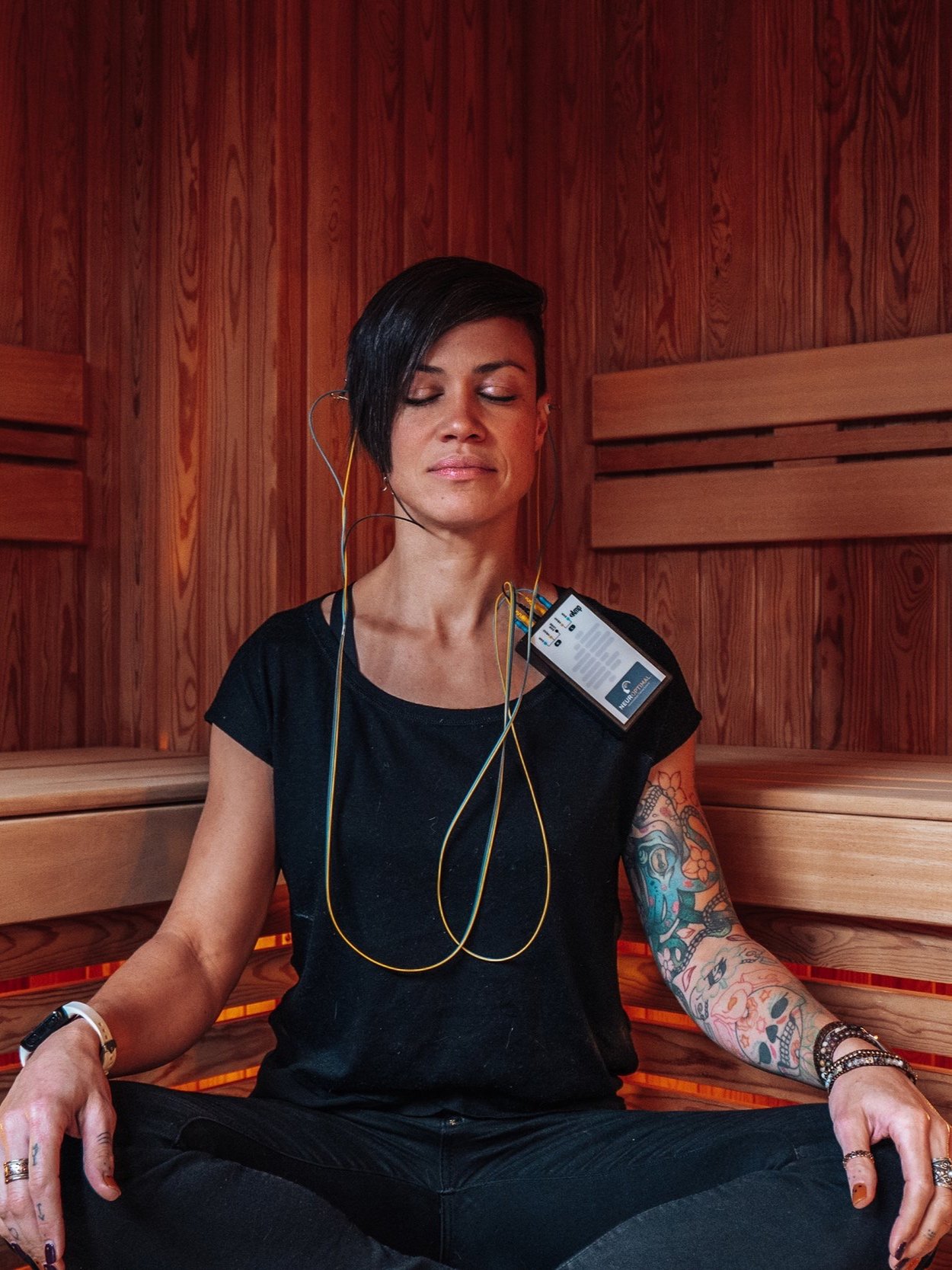
Accelerated Resolution Therapy (ART)
Release painful memories. Rewrite your story. Reclaim your life.
Many women I work with feel stuck in memories they never asked to carry—images that return when waking or sleeping, leaving them with anxiety, depression, insomnia, phobias, post-traumatic stress (PTSD), low self-esteem, or difficulties with attachment and trust.
You may have wished you could just delete those memories, remove the images from your mind, and finally feel free.
Accelerated Resolution Therapy (ART) offers exactly that possibility.
What is Accelerated Resolution Therapy?
Accelerated Resolution Therapy (ART) is a specialized, evidence-based trauma therapy designed to help your brain reprogram the way distressing memories are stored. Using guided eye movements and visualization, ART allows you to replace the painful images that trigger overwhelming emotions with positive, empowering images of your choosing.
The result?
Painful triggers lose their emotional charge.
Information remains, but the suffering and images connected to the memories dissolve.
Symptoms like anxiety, nightmares, and hypervigilance often resolve quickly—sometimes in as little as one session.
ART combines elements of eye movement therapy, guided imagery, psychodynamic therapy, and gestalt techniques to accelerate healing in a way that feels calming and empowering.

Why Clients Choose ART
Fast results: Many clients experience relief within 1–3 sessions, instead of months or years.
No need to retell your trauma: You don’t have to share details you’d rather keep private. Your brain does the healing work; I serve as your guide.
Gentle and empowering: You may briefly recall your memory, but the focus quickly shifts to replacing it with something new, leaving most clients feeling lighter, relieved, and often laughing by the end of the session.
Deeper change: Instead of “white knuckling” your way through new behaviors, ART helps your brain create new pathways so changes in thought, emotion, and action follow naturally.
ART Intensives
At Wild Oaks Counseling, ART is offered in short intensive sessions—2–3 hours of focused, immersive work.
Why intensives?
They allow you to resolve in one day what might otherwise take months of weekly therapy.
They create the time and space needed to open up, process deeply, and leave feeling truly different.
They can be added as a supplement to ongoing talk therapy or serve as a powerful standalone experience.
Examples of what ART intensives can address:
Childhood trauma or attachment wounds
PTSD from abuse, accidents, or medical trauma
Phobias, fears, and anxiety
Grief, loss, or complicated breakups
Shame and negative self-beliefs
What to Expect in an ART Session
Step 1: Setting your goal. We’ll identify the memory, image, or feeling you want to release.
Step 2: Eye movements + visualization. Through calming, guided eye movements, your brain processes and rewires the memory.
Step 3: Replacing the image. You choose how to reimagine the memory—what positive image feels safe, empowering, or freeing.
Step 4: Integration. We lock in the changes so your brain recognizes the new pathway.
Most clients are surprised at how comfortable and creative the process feels—and how quickly relief comes.

Why ART May Be Right for You
If you’ve tried talk therapy before and felt like you knew what was wrong but couldn’t make the feelings shift… ART bridges that gap. It helps the emotional part of your brain finally catch up with what your logical brain already knows.
You don’t have to keep reliving the same stories. You can move through them, rewrite them, and step into the next chapter of your life with confidence.
Begin Your Healing With ART
If you’re ready to let go of the images and stories that have kept you stuck, ART may be the breakthrough you’ve been searching for.
Two Ways to Work Together
Individual Trauma Therapy
You may hesitate to even call it “trauma.” After all, you’ve built a good life, achieved a lot, and from the outside, you look successful. But inside, it often feels different. Maybe your childhood was marked by emotional distance, high expectations, or experiences you’d never want anyone else to go through. Maybe past relationships left you questioning your worth, your judgment, or your ability to trust.
You find yourself worrying constantly, second-guessing decisions, struggling to feel confident, or replaying conversations long after they’re over. Trauma therapy can help you reconnect with yourself, quiet the self-doubt, and begin creating relationships where you feel safe, secure, and deeply seen.
These sessions are offered in a traditional therapy format on an ongoing basis.
Trauma Therapy Intensives
Traditional weekly therapy has its place, but for many high-achieving women, busy moms, and professionals, it can feel slow, fragmented, or like “just another appointment.” That’s why I offer trauma therapy intensives—customized, extended sessions designed to help you go deeper, faster.
Intensives are longer sessions (typically 3+ hours over 1–3 days) with a focused, intentional goal. They’re especially effective for healing specific traumas, breaking through plateaus when you feel stuck in weekly therapy, or jumpstarting your growth with a strong foundation of skills and insight.
Instead of spending months circling the same patterns, you’ll have the time and space to fully process, release, and reset—so you can move forward with clarity and confidence.
-

Accelerated Resolution Therapy (ART)
ART uses gentle eye movements and visualization to help your brain release stored trauma quickly and effectively. Many clients notice significant relief in just 1–3 sessions, making it a powerful tool for resolving painful memories and shifting negative beliefs.
-

Brainspotting (BSP)
Brainspotting uses the connection between your gaze and your nervous system to access and heal trauma at a deep level. By focusing on specific eye positions, your brain and body are able to process unresolved experiences in a way that feels natural and profound.
-

Neurofeedback
Neurofeedback helps retrain your brain to regulate itself. By receiving real-time feedback, your brain learns to spend more time in calm, focused, and balanced states—so regulation becomes your default rather than the exception.
-

Enneagram
The Enneagram is an insightful framework for understanding your core motivations, fears, and adaptations. It can help you recognize patterns that no longer serve you, deepen self-awareness, and create more authentic connections with others.
Brainspotting vs. ART vs. EMDR: What’s the Difference?
Many clients come to me after hearing about EMDR, only to discover that Brainspotting or Accelerated Resolution Therapy (ART) might be a better fit for them. All three are evidence-based trauma therapies, but they work in different ways.
Therapy
Brainspotting (BSP)
Accelerated Resolution Therapy (ART)
Eye Movement Desensitization & Reprocessing (EMDR)
How It Works
Uses eye positions to access “brainspots” where trauma is stored in the body and nervous system.
Combines eye movements with visualization to replace distressing images with positive ones.
Uses eye movements or tapping to reprocess traumatic memories.
Best For
PTSD, C-PTSD, anxiety, attachment wounds, relationship trauma, creative/performance blocks.
PTSD, phobias, anxiety, shame, single-event trauma, negative self-beliefs.
Widely researched for PTSD and trauma.
Unique Benefits
Client-led, gentle, deep body-brain connection, faster breakthroughs with fewer words.
Often fast (1–3 sessions), no need to share trauma details, highly structured yet creative.
Well-established, highly researched, but can feel longer, more rigid, and emotionally activating.
Why I offer Brainspotting and ART (but not EMDR):
As both a therapist and a former client, I’ve found Brainspotting and ART to be gentler, faster, and more flexible than EMDR. They allow you to experience profound shifts without retraumatization, and in my practice, clients often notice relief in hours instead of months.

FAQs for ART
Q: Is ART the same as EMDR?
ART was developed after EMDR and integrates additional techniques like guided imagery, gestalt, and psychodynamic approaches. While both therapies use eye movements to process trauma, ART is often faster and gentler. Many clients find ART more structured, calming, and efficient, with results sometimes seen in just 1–3 sessions.
Q: How fast does ART work?
ART is designed to accelerate the healing process by reprogramming the way the brain stores distressing memories. Because the method bypasses long retellings of trauma, clients often experience dramatic relief within one session, though some choose 2–3 sessions or an intensive to address more complex experiences.
Q: Do I have to talk about my trauma for ART to work?
One of the unique benefits of ART is that you don’t have to describe your trauma out loud if you don’t want to. The therapy works by using eye movements and visualization to shift how your brain stores the memory, so you stay in control of the process. Many clients find this incredibly freeing compared to traditional talk therapy.
Q: What kinds of issues does ART help with?
ART has been shown to help with single-event trauma, complex trauma, PTSD, anxiety, panic, depression, grief, loss, phobias, medical trauma, and painful memories that still feel “stuck.” It’s also effective for addressing shame, attachment wounds, and negative self-stories that impact confidence and relationships.
Q: Is ART safe?
ART is considered a safe, research-supported form of trauma therapy. While you may briefly recall a distressing memory during the beginning of the process, the eye movements and guided techniques quickly reduce the emotional intensity, leaving most clients feeling lighter, calmer, and relieved by the end of the session.
Q: Can ART be combined with other therapy?
Many clients choose to use ART as a powerful supplement to ongoing talk therapy or relational work. Others schedule ART intensives as a stand-alone treatment when they need focused healing in a short period of time. We’ll design the right approach for you, based on your goals.
Q: Should I choose Brainspotting or ART?
Brainspotting and ART both reprocess trauma quickly, but they feel different. ART guides you through a structured process of replacing painful images, while Brainspotting allows your brain and body to lead the way. Some clients prefer one, some use both. We’ll decide together which best fits your goals.
Q: Why don’t you offer EMDR?
While EMDR is highly researched and effective, in my clinical and personal experience, Brainspotting and ART lead to faster, more comfortable breakthroughs with less retraumatization. That’s why I’ve chosen to specialize in these modalities.



